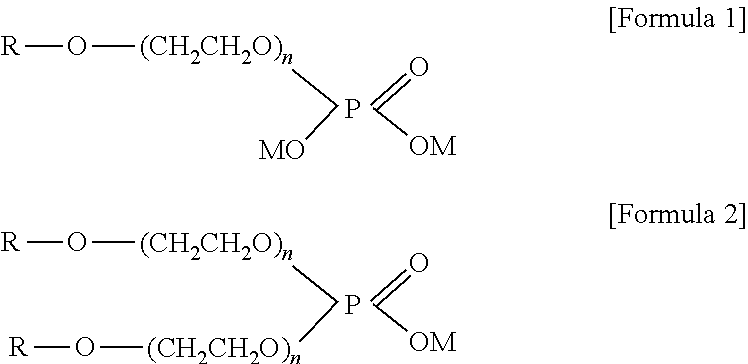Method for producing nitrile rubber
- Summary
- Abstract
- Description
- Claims
- Application Information
AI Technical Summary
Benefits of technology
Problems solved by technology
Method used
Image
Examples
examples 2 and 3
[0025]Rubbers were produced in the same manner as in Example 1 except that an amount of emulsifier used for polymerization was changed as shown in Table 1.
examples 4 to 9
[0026]Rubbers were produced in the same manner as in Example 1 except that the amount and type of emulsifier used for polymerization were changed as shown in Table 1.
examples 10 to 17
[0027]Rubbers were produced in the same manner as in Example 1 except that 5.0 parts by weight of the phosphate emulsifier was added alone as the emulsifier used for polymerization, and the number of carbon atoms (R) of alkyl and the number of ethylene oxide (n) in the phosphate emulsifier were changed as shown in Table 2.
PUM
| Property | Measurement | Unit |
|---|---|---|
| Percent by mass | aaaaa | aaaaa |
| Percent by mass | aaaaa | aaaaa |
| Percent by mass | aaaaa | aaaaa |
Abstract
Description
Claims
Application Information
 Login to View More
Login to View More - R&D
- Intellectual Property
- Life Sciences
- Materials
- Tech Scout
- Unparalleled Data Quality
- Higher Quality Content
- 60% Fewer Hallucinations
Browse by: Latest US Patents, China's latest patents, Technical Efficacy Thesaurus, Application Domain, Technology Topic, Popular Technical Reports.
© 2025 PatSnap. All rights reserved.Legal|Privacy policy|Modern Slavery Act Transparency Statement|Sitemap|About US| Contact US: help@patsnap.com



